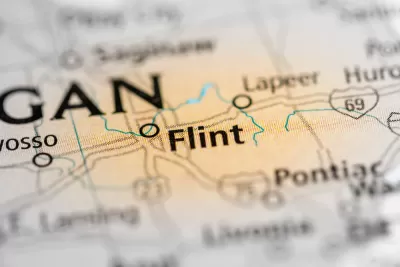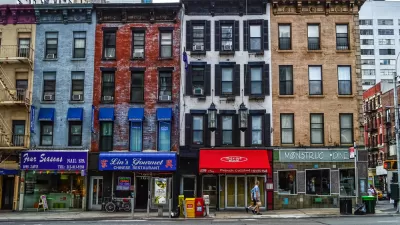The community's hard work has helped Flint planners take an inventory of its building stock, as well as secure needed funding from the federal government.

Scott Atkinson reports on a unique participatory planning process that helped the city of Flint with some of the hard work necessary for a master planning process launched in 2012, and has since helped the city secure funding from the federal Hardest Hit fund.
The key to the story has been community participation in a neighborhood inventory process, that helped not only identify the city's existing development strengths and weaknesses, but also helped take the message about the master plan and build trust for planning among the community.
"That first year, 2012, community-based groups inventoried the balance of residential properties" not yet inventoried by city planners, according to Atkinson.
In 2013, residents hit the streets again, this time taking inventory of the city’s commercial properties. In 2014, they updated their residential data and documented the state of the city’s streetlights. In 2015, they took inventory on sidewalks. In 2016, they turned to residential again (an every other year project), and in 2017, residential and commercial properties.
Those inventories have also been integral to helping the Genesee County Land Bank and the city of Flint secure $20.1 million from "the federal Hardest Hit Fund, a program that helps communities struggling with high foreclosure rates." According to Atkinson, "[a]s of July, Flint has received a total of about $67.5 million in Hardest Hit money. About half of that has been spent so far, resulting in the demolition of 2,248 structures."
This article is the fourth in a five-story series on resident-led revitalization efforts in Flint, Michigan.
FULL STORY: Flint mapping makes city planning a team effort

Alabama: Trump Terminates Settlements for Black Communities Harmed By Raw Sewage
Trump deemed the landmark civil rights agreement “illegal DEI and environmental justice policy.”

Study: Maui’s Plan to Convert Vacation Rentals to Long-Term Housing Could Cause Nearly $1 Billion Economic Loss
The plan would reduce visitor accommodation by 25% resulting in 1,900 jobs lost.

Why Should We Subsidize Public Transportation?
Many public transit agencies face financial stress due to rising costs, declining fare revenue, and declining subsidies. Transit advocates must provide a strong business case for increasing public transit funding.

Paris Bike Boom Leads to Steep Drop in Air Pollution
The French city’s air quality has improved dramatically in the past 20 years, coinciding with a growth in cycling.

Why Housing Costs More to Build in California Than in Texas
Hard costs like labor and materials combined with ‘soft’ costs such as permitting make building in the San Francisco Bay Area almost three times as costly as in Texas cities.

San Diego County Sees a Rise in Urban Coyotes
San Diego County experiences a rise in urban coyotes, as sightings become prevalent throughout its urban neighbourhoods and surrounding areas.
Urban Design for Planners 1: Software Tools
This six-course series explores essential urban design concepts using open source software and equips planners with the tools they need to participate fully in the urban design process.
Planning for Universal Design
Learn the tools for implementing Universal Design in planning regulations.
Smith Gee Studio
Alamo Area Metropolitan Planning Organization
City of Santa Clarita
Institute for Housing and Urban Development Studies (IHS)
City of Grandview
Harvard GSD Executive Education
Toledo-Lucas County Plan Commissions
Salt Lake City
NYU Wagner Graduate School of Public Service





























